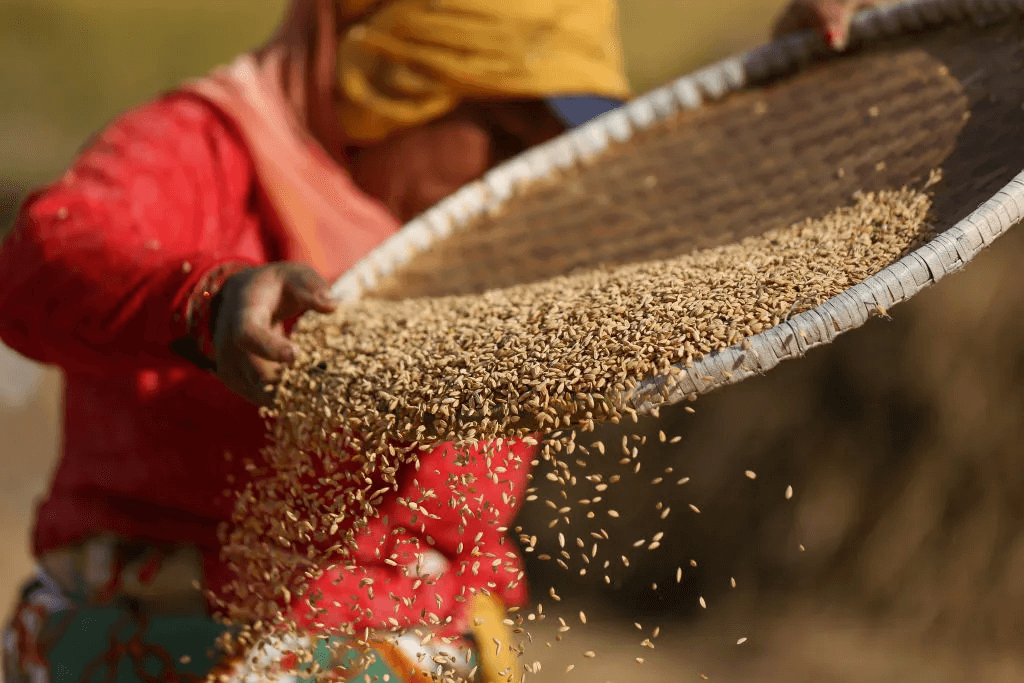Tags
A World Without Rice Would Be a World Without Culture

By J.J. Johnson
Rice is not just a food—it’s the heartbeat of cultures, a unifying thread that has woven together the histories, traditions, and daily lives of countless communities across the globe. For billions of people, rice is more than a staple; it’s a symbol of identity, heritage, and survival. To imagine a world without rice is to imagine a world without culture, a loss that goes beyond the physical and touches the very soul of humanity.
As a chef and founder of Fieldtrip, a rice bowl shop in New York City, and author of The Simple Art of Rice, a cookbook focused on rice, I have dedicated my career to understanding and celebrating this essential grain. The idea that rice is culture resonates deeply with the many communities for whom rice is not just a meal but a memory, a story passed down through generations. From the jollof rice of West Africa to the sushi of Japan, rice dishes tell tales of migration, family, and resilience. They serve as reminders of where we come from and who we are.
One of the most transformative experiences in my life was going to Ghana in 2011. It changed how I looked at food and helped me find myself. On that trip, I truly understood how rice connects so many cultures within the African diaspora. More recently, in Cartagena, Colombia, I felt the same connection with Afro-Latino food. These experiences have shaped my professional relationship with rice, and they continue to inspire me as I create menus that celebrate its cultural importance.
Yet, today, this vital crop faces unprecedented threats from climate change. Extreme weather events, dwindling water resources, and shifting agricultural landscapes are making it increasingly difficult to cultivate rice in the traditional ways that have sustained us for centuries. Experts predict that global rice production will shrink by 15% by 2050, even as demand increases, signaling a troubling trend for the future.
With a monthly purchase of around 5,000 pounds of rice for my restaurants, I have developed a deep appreciation for its role in feeding families and communities—and an understanding of why it’s crucial for chefs to engage with initiatives that combat climate change. I’ve been involved in the James Beard Foundation’s Climate Solutions for Restaurant Survival campaign, advocating for legislation that supports climate-smart agriculture and emphasizing the need for a sustainable, resilient supply chain in the restaurant industry. During Climate Week NYC in September, I spoke on a panel with Food Tank and the James Beard Foundation and partnered with the Gates Foundation, which is committed to ensuring children around the world have access to essential food staples like rice, to highlight childhood malnutrition.
Rice is a critical source of food for billions of people, but the impact of climate change on the crop goes beyond its nutritional value. Warmer temperatures and extreme weather threaten to erase the cultural narratives embedded in each grain. What happens to our cultural identity when the rice fields dry up? What stories will we lose when the next generation can no longer cook the dishes their ancestors did?
We cannot afford to lose rice—or the rich cultures it sustains. So, instead of imagining a world without this essential crop, we should focus on how to adapt and innovate to protect it.
For example, we could cut methane emissions by curbing flooding or adding fish, ducks, or crawfish into the production system. By adopting these sustainable methods, we can build a resilient future for rice cultivation while preserving the cultural heritage tied to this vital grain. Farmers in Vietnam are already utilizing these integrated rice-fish farming systems, which not only reduce emissions by lowering the need for continuous flooding but also improve biodiversity and soil health.
The challenge, however, extends beyond just protecting a crop. It’s about innovating to meet the demands of a rapidly changing climate. As temperatures rise and weather patterns become more unpredictable, we must embrace methods that make rice production more sustainable and climate-resilient. This includes developing drought-resistant rice strains, optimizing irrigation practices to conserve water, and leveraging precise agriculture to minimize waste. Rice farmers like Lundberg Farms have adopted a regenerative organic agriculture system rather than use traditional rice farming methods. With this system they rehabilitate soil, respect animal welfare, and support farmers, while sequestering carbon and reaping more nutritious and abundant yields. By adopting such forward-thinking approaches, we can ensure that rice continues to thrive despite the environmental challenges ahead.
In this fight against climate change, we all have a role to play—from farmers and consumers to chefs and policymakers. Together, by embracing sustainable practices, preserving cultural heritage, and advocating for systemic change, we can ensure that rice remains a symbol of abundance, unity, and nourishment for generations to come.
A life without rice is a life without culture. Let’s make sure that’s a future we never have to face.
https://time.com/7178113/rice-climate-change/Published Date: November 26, 2024






